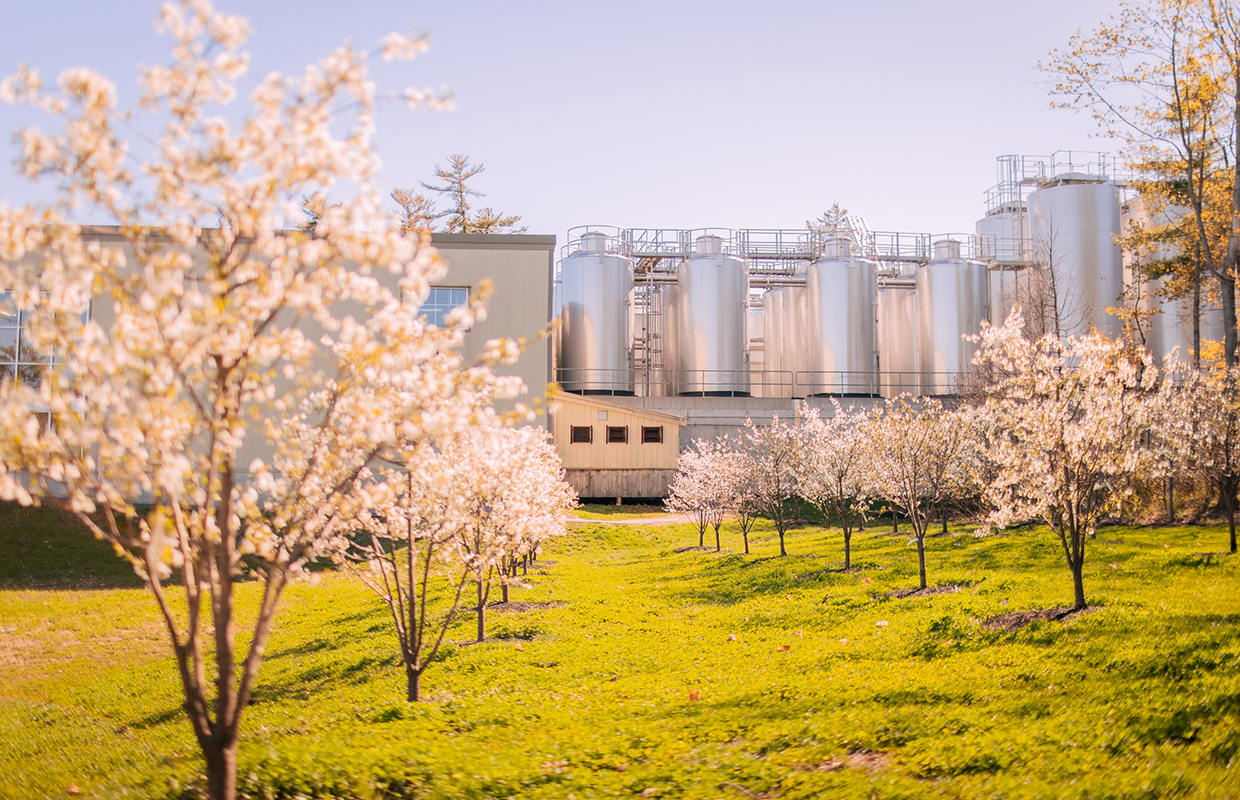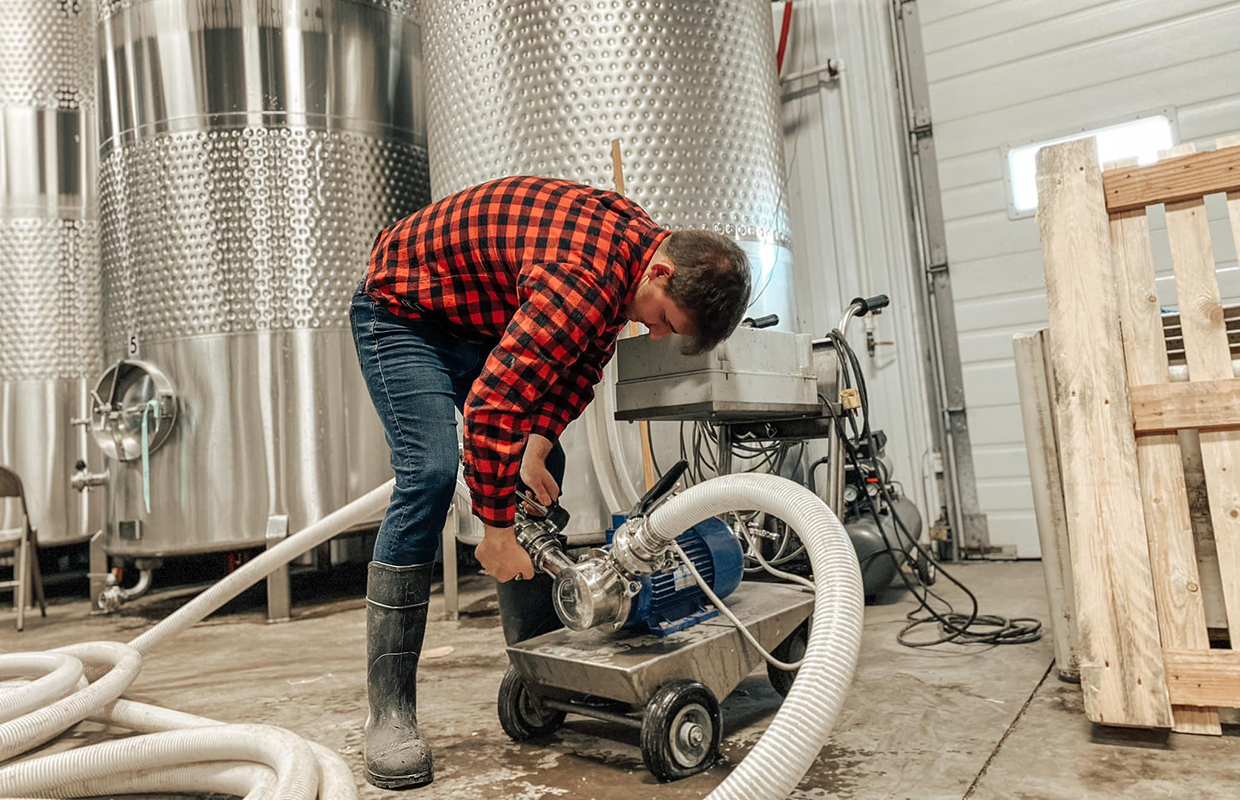
As sales have slid and craft beer faces even steeper declines, Allagash Brewing has looked to spend less time lamenting the category’s challenges and more time rethinking how a regional brewery can stay relevant. The result, they shared recently, is a slate of hospitality investments, sports partnerships and consumer-experience initiatives aimed not just at stabilizing sales, but expanding the brewery’s reach into new pockets of drinkers.
That focus helped Allagash outperform the industry. While overall beer was down about 5% through September and craft at roughly 7%, Allagash narrowed its own early-year dip from 10% to just 2%.
“We continue to buck these trends,” founder Rob Tod said during a press call. “Our core beer, Allagash White, is still gaining share after 30 years.”
Much of that momentum, the team at Allagash argues, came from leaning harder into the on-premise experience and meeting consumers where they already gather, like ballparks, stadiums, small towns and taprooms.
Here is a deeper look at the brewery’s strategy, along with insights that others could adapt for their own markets.
Meeting Consumers on Their Turf
Allagash’s most high-profile move this year was becoming a partner of the New York Mets and opening “Allagash Alley,” a branded bar inside the baseball team’s Citi Field. The venue, said Marketing Director Josh Fruchtman, instantly became the company’s largest on-premise location by volume.
The brewery also partnered with Hearts of Pine, an up-and-coming USL League One soccer club. With the World Cup coming to the United States next year, Allagash sees the sport as a key avenue to reach younger, globally minded fans.
That said, you don’t need a Major League Baseball partnership to leverage your brand into sports venues. Look for high-engagement, low-barrier opportunities:
- Sponsor a local high school or semi-pro team.
- Create a fan-club night with exclusive beer releases tied to game days.
- Offer watch-party packages to nearby bars where your beer already sells.
Too many assume sports sponsorships are out of reach, but the scale can adjust to the size of your market.
Music, Mental Health & New Audiences
Beyond sports, Allagash partnered with Busyhead Project, a mental-health nonprofit founded by musician Noah Kahan. The brewery became the official beer sponsor of the group’s Folk & Fairways Festival in Vermont. It was an activation that aligned the brand with wellness, artistry and charity.
Think critically about cause partnerships. Are you choosing organizations because they authentically fit your values, or because they’re trendy? A strong alignment with an event or cause can give your brewery cultural relevance locally without the need for huge budgets.
Flip It & Civic: Re-Centering the On-Premise Beer Experience
Recognizing that the on-premise category hasn’t received enough industry attention, Allagash launched “Flip It and Civic,” a consumer education and server-training initiative designed to create a consistent Allagash White pour nationwide. The campaign addresses a common consumer frustration: ordering a familiar beer and receiving an inconsistent experience.
For Allagash, that means through targeted digital advertising with streaming TV spots and placements on platforms like Hulu via Catalina, the campaign delivered a 36% sales lift they said. Nearly half of the buyers reached were new to Allagash or new to craft beer entirely. Now, you don’t need a national ad budget to replicate this concept. There are other ways, like:
- Create a one-page “perfect pour” guide for bars that pour your beers.
- Offer to train local bartenders annually or quarterly with short in-person staff sessions.
- Develop a simple social video showing how to serve your flagship beer correctly.
- Audit your tap handles: is your brand represented consistently across accounts, or are you assuming it is?
Consistency is often a weak link for smaller breweries, but it’s also one of the most solvable problems.
Expanding Hospitality
For the first time in 30 years, Allagash opened a new tasting room: the Allagash Bungalow in Scarborough, Maine. The goal wasn’t capacity, but connection—reaching residents outside Portland with a different expression of the Allagash experience. That hospitality footprint paid off this year. The flagship tasting room welcomed about 100,000 visitors, saw a 10% revenue increase and earned both a Travelers’ Choice Award from TripAdvisor and recognition as a top 10 brewery tour by USA Today. of course, regional breweries might have the budget for a second location. Not all breweries probably don’t have that luxury, but you can still replicate the underlying philosophy.
- Bring your tasting-room experience to customers with pop-up beer gardens in unique spaces.
- Partner with local businesses to host rotating mini-taprooms.
- Create “satellite experiences” such as mobile tasting bars, seasonal patios or co-branded community events.
Sometimes your ability to grow doesn’t come from adding more tanks, it comes from more presence.
Allagash’s strategy doesn’t seem built on chasing trends. It’s, instead, built on showing up where people gather, training partners to treat the brand consistently and reimagining hospitality as a long-term investment rather than an optional perk. You don’t need the Mets, a new tasting room or national streaming ads. But you do need a plan that strengthens the experience around your beer, not just the beer itself.






Be the first to comment